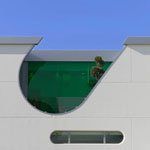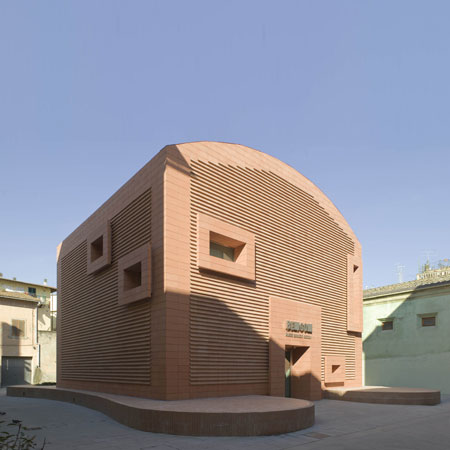
Benozzo Gozzoli Museum by Massimo Mariani
Italian architects Massimo Mariani have completed the Benozzo Gozzoli Museum in Castelfiorentino, Italy.
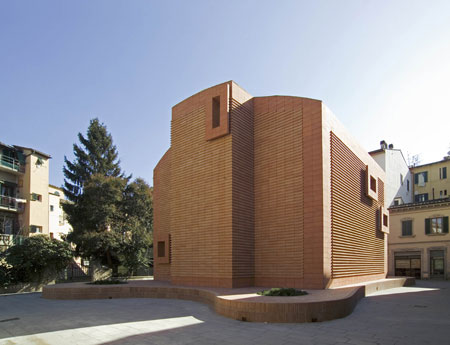
The museum takes the place of a now-demolished 1960s building. Its island-shaped base closely follows the floor plan of the preceding building.
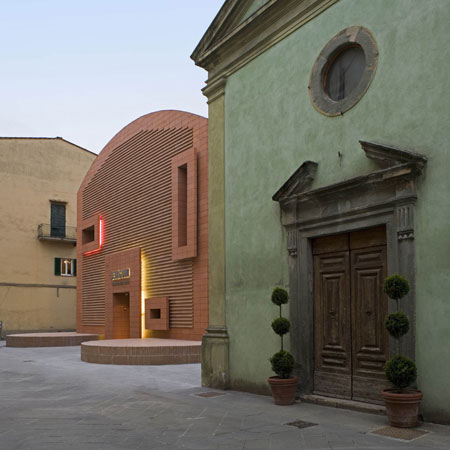
This footing replaces the function of traditional street furniture, offering an area for the public to congregate and sit, and can also act as a stage for small events.
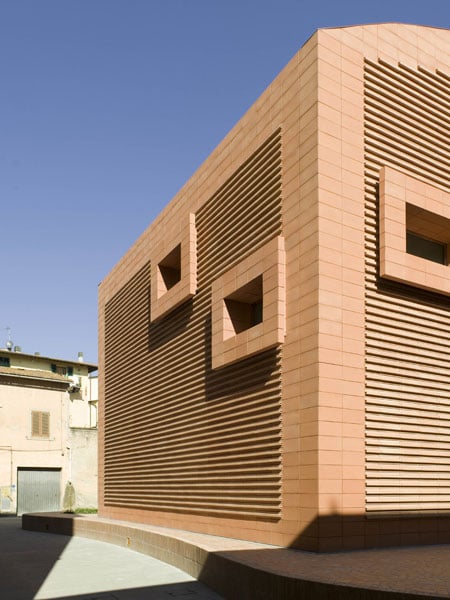
The museum is clad with cotto, similar to the finish of some of the neighbouring churches.
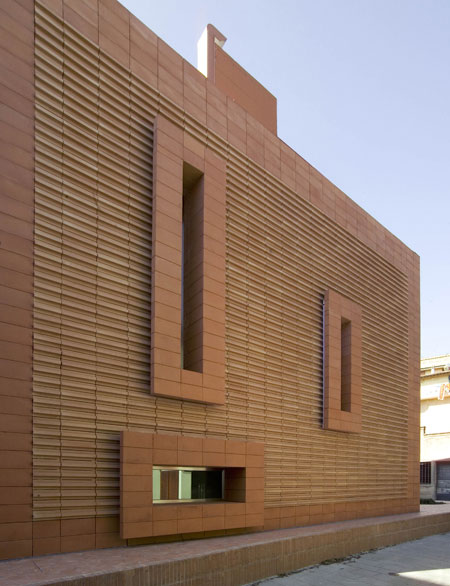
The museum is divided between four floors, three above ground and one below.
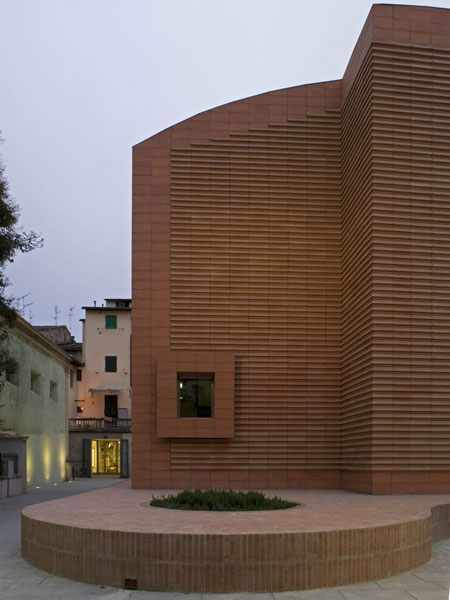
Gozzoli's Tabernacolo della Visitazione is housed on the ground floor, an area partly covered with a low ceiling opening up to the full height of the building, and illuminated by natural light from a skylight in the ceiling.
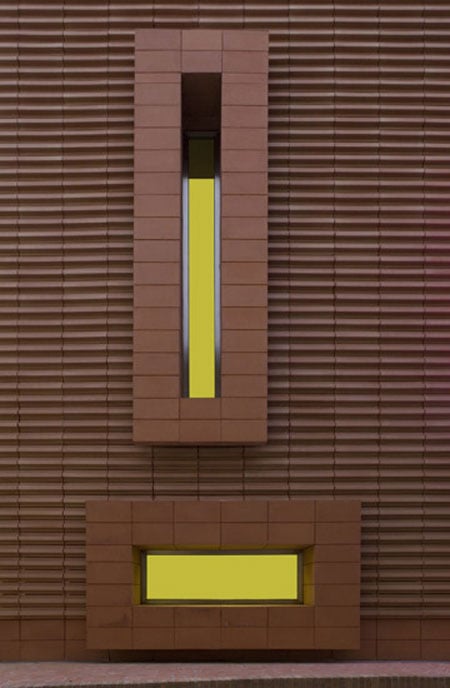
The Tabernacolo della Madonna della Tosse is placed on the first floor.
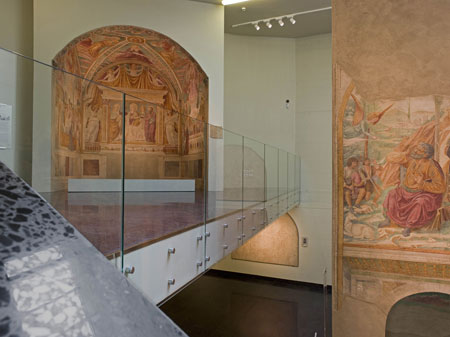
The second floor is an area for small exhibitions and educational workshops.
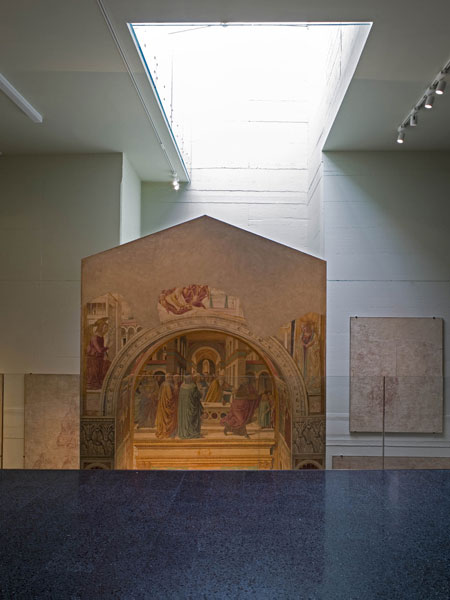
Photos: Alessandro Ciampi.
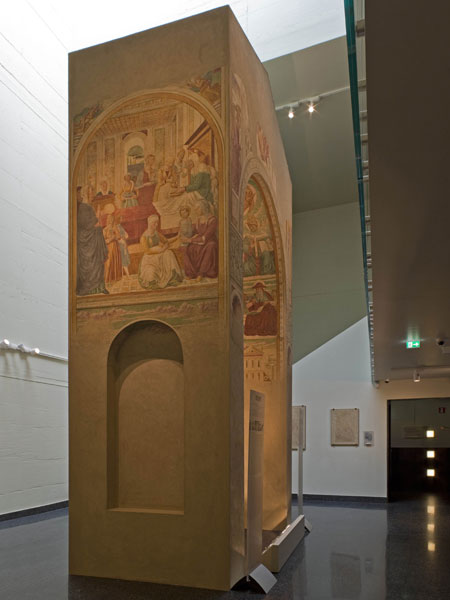
Here's further information from Massimo Mariani Architteto:
--
Benozzo Gozzoli Museum in Castelfiorentino.
I have always felt tenderness for the artworks of the past because of their fragility. They've been very much loved by people throughout the times. They've been passed on from hand to hand, caressed and constantly cared for. A building needed to be made. It had to house 2 tabernacles and their sinopsies, which had been waiting long, in the rooms of the public library for a final placement.
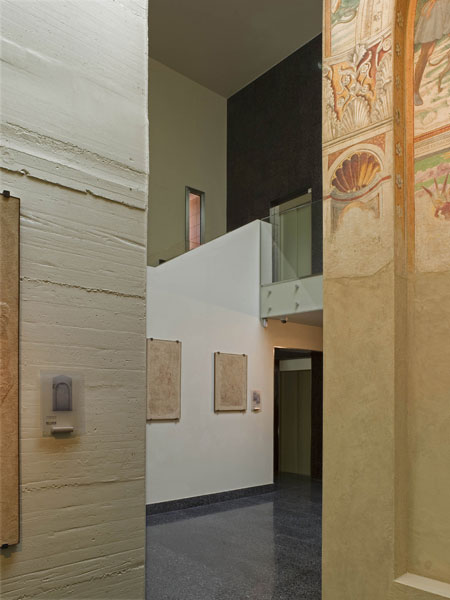
In order to do this, in the historical centre of Castelfiorentino, along Via Testa Ferrata, a building of the 60s had been demolished near the train station and next to the Oratoriodi San carlo. The new design of this building, which has a total area of about 400 square metres, closely follows the ground traces of the old building and it is luckily detached from the buildings around because it is located in an empty space which is a sort of square.
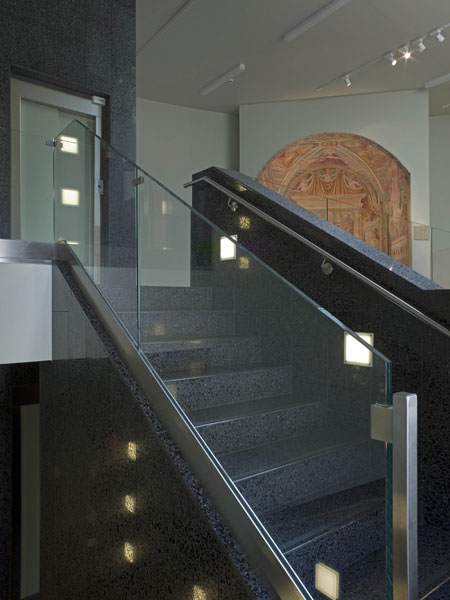
The building is rooted to the ground through a functional island-shaped base which solves the problem of urban furnishing meant in the classical sense (benches, flower pots etc.). The curvilinear base takes over the space around the building and, at the same time, people take over a little of the museum's space: the base becomes a bench, a play area for children and adults, a theatre for small outdoor events.
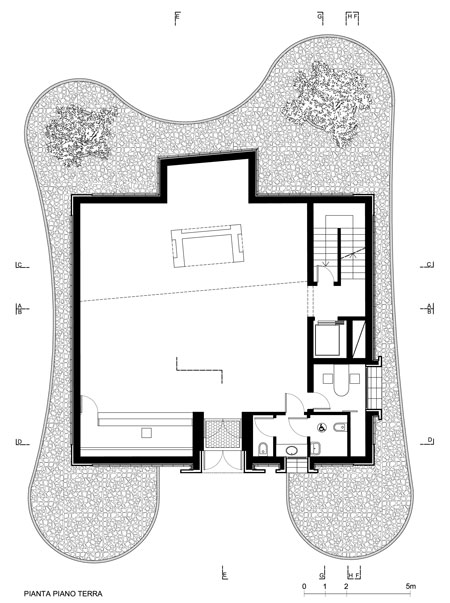
The building had to be entirely coated with cotto; in this way, it refers to materials and finishes of some of the local churches. Inside, the museum, is spread over 4 floors, three above ground and one underground. The ground floor is partly characterized by a low ceiling: a shaded area which quickly runs to the full-height space where the “Tabernacolo della Visitazione” is placed. This is illuminated by a cascade of natural light coming from the skylight in the ceiling.
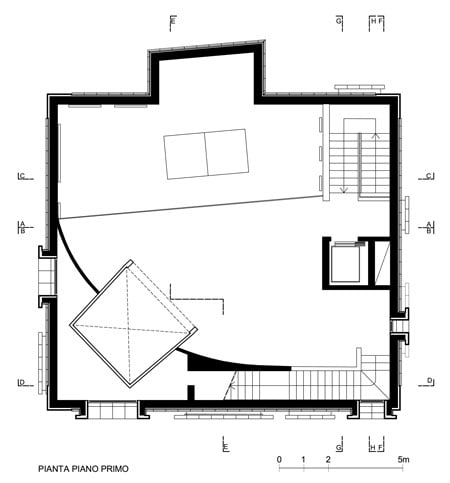
On the first floor, recessed into the corner-wall, we find the “Tabernacolo della Madonna della Tosse” which looks like a television screen. The staircase linking the floors, becomes a kind of visual path which frames the Tabernacles (now lacking their original context), according to new and constantly changing perspectives. It stops on the first floor, and then starts again on the opposite side thus reaching a room on the second floor, a naturally suitable space for small exhibitions and educational workshops.
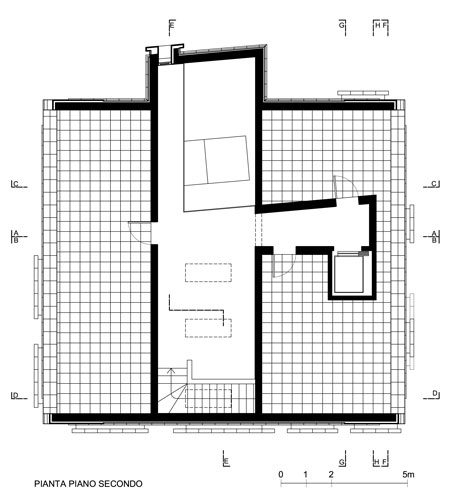
The building, due to its small size, retains something domestic; it is conceived like a home-studio where Benozzo Gozzoli, surrounded by his students, seems to join us while we're looking at these frescoes and he's still working on them.
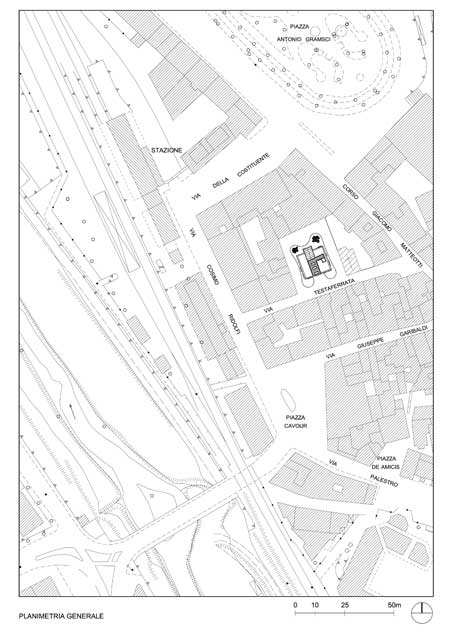
More Dezeen stories on Massimo Mariani:
.
